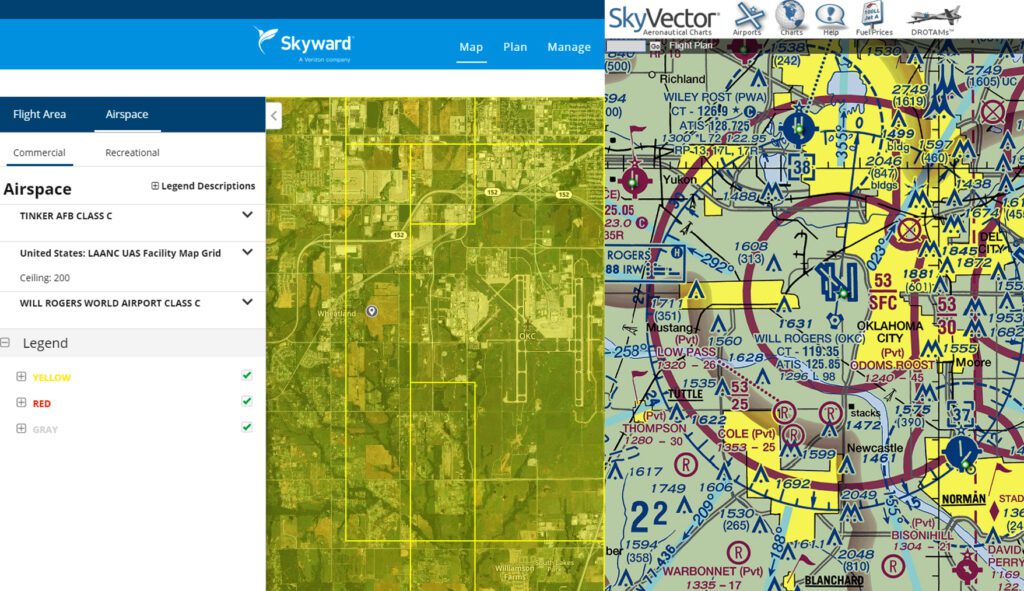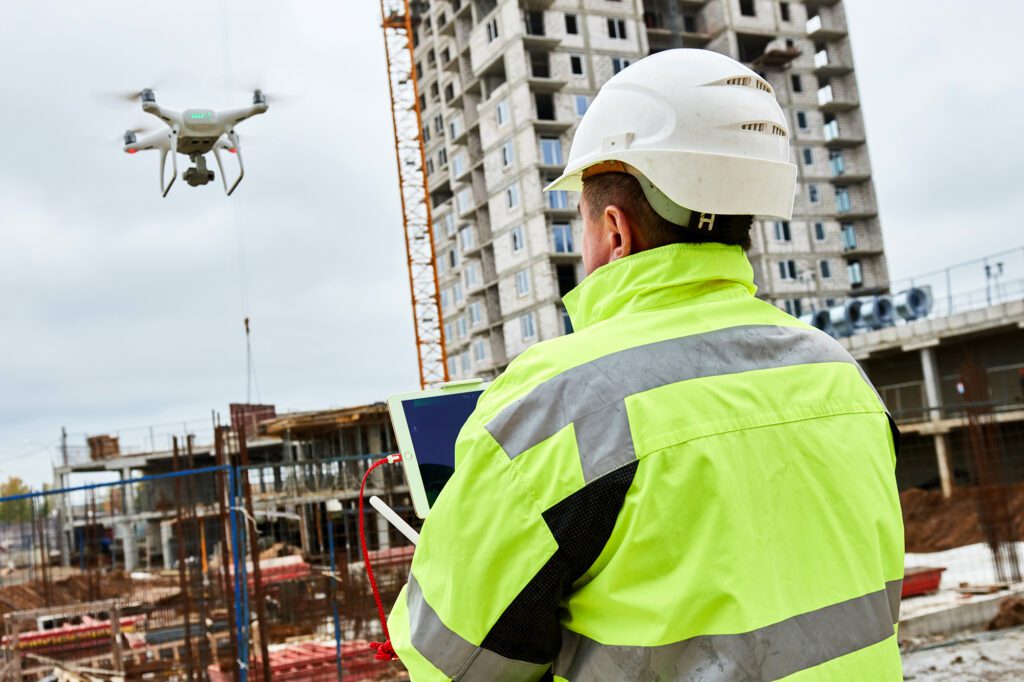A Look Behind the Curtain at UAS Program Preparation and Safety
This is the first article in a series about unmanned aircraft system (UAS) use in the A/E industry.
Unmanned aircraft systems, better known as drones, are making a significant impact in the A/E industry—useful for a number of meaningful applications. In subsequent Insights, topics such as quality control, data validation and project deliverables will be examined. This series begins with the most important topic: safety.
Thorough preparation goes into a productive UAS program and each individual collection. The responsibility placed on a technology such as this—during a time of heightened awareness—has all parties taking UAS activities seriously, especially those in charge such as the Federal Aviation Administration (FAA).
No Reason to Be Uninformed
There is nothing clearer than the FAA remote pilot certification (Part 107) exam itself. Here is a paraphrased potential question/scenario: You have been asked by a local news station to fly over a scene to capture breaking news, knowing rules will be broken. You recommend not flying. The station tells you to fly now, ask questions later. What type of characteristic is taking place?
Questions covering impulsiveness, aggression, carelessness and similar traits are prevalent on the Part 107 exam.
Although these may be common-sense topics, the FAA is communicating clearly how important the idea of asking for permission—not forgiveness—really is.
The FAA exam also has many questions implying the overarching responsibility placed on the shoulders of the pilot-in-command (PIC). Exam sections covering topics such as sectional aeronautical charts, common traffic advisory frequency (CTAF), Meteorological Aerodrome Reports (METAR) and Terminal Area Forecast (TAF) reflect the context and knowledge a PIC needs to perform a safe operation. The best-selling point for a UAS data collection is safety―keeping the boots off the ground in an area as much as possible. That should not be negated because an operator is rushed, uninformed or negligent.
In other words, UAS programs begin and end with safety.
As a UAS program is being implemented, studying from online content and courses, text books and flight schools is a great place to start. This content is easy to come by. The Part 107 exam is significantly more challenging than taking a driving exam for the first time as a 16-year-old. The main reason is people typically observe what goes into driving a vehicle for years leading up to the driving test. Flying a UAS is less typical for the average person, so it’s a good idea to be immersed in the content.
Web-based UAS management platforms (above, left) enable flights to be logged and permission to be requested through Low Altitude Authorization Notification Capability (LAANC) automation. However, they shouldn’t take the place of reviewing sectional aeronautical charts (right) entirely. These maps show Will Rogers World Airport in Oklahoma City.
Technology’s Role in Preparation
After completing a successful Part 107 exam, our attention should be on safety policies and procedures. Technology advances quickly, and best practices should be established to collect accurate data safely. Checklists for packing, preflight and postflight activities, and unpacking are imperative for a quickly growing UAS program.
The best UAS providers are generally experienced field surveyors, who understand the method in which the tool is most effective. Understanding where and how to set effective ground control or aerial targets is extremely important. In an upcoming part of this series, data validation, quality control, ground truthing and obscure areas will be covered. Remember, an important part of establishing best practices is maximizing efficiencies. One example is avoiding additional trips into the field. Understanding areas of high vegetation or ground truthing that can be done during the additional collection can save thousands of dollars.
Mission planning must take place in the office—long before setting foot in the field. Ask that a KMZ file, which stores map locations viewable in Google Earth, be provided. This jump-starts the ability to pull that file into flight operations and mission planning software. A drone management platform such as Skyward enables flights to be logged and permission to be requested through the Low Altitude Authorization Notification Capability (LAANC). LAANC has been a game-changer, reducing a permission request to fly in classified airspace from a possible 90-day wait from the FAA, to often an immediate response that arrives with a list of rules and allowed ceiling altitude.
LAANC is a wonderful resource and collaboration, but it should not be relied upon solely. Many airports aren’t participating in LAANC automation to further support UAS integration into the airspace, so a study of sectional charts is needed on all flights. Additional research or permissions must take place next, depending on specialized areas such as military operations areas (MOA). Following certainty of permission to fly and at what altitude, a mission plan should be put together to identify an estimated flight time and battery consumption.
Personal protective equipment, proper sky awareness and complete focus are the most important items for safe field operation. (Shutterstock.com)
Safe Field Operation Necessities
A transparent line of communication with the client has to take place for each flight. Using the UAS as a surveying tool should not take place if the client has not allowed it with a full understanding of the operation and safety procedures that go into the operation. Sending an estimate of the flight schedule is a best practice to invite the client to participate. This is a great time to get an understanding of nearby property owners and adjust the flight as needed.
A project walkthrough prior to flight with photos or hand sketches of nearby structures, plus notes of estimated heights, is a great way to ensure everyone that the PIC is cognizant of his or her surroundings prior to flight and can be added to the flight logs.
Personal protective equipment (PPE), proper sky awareness and complete focus are the most important items for safe field operation. One is not necessarily more important than any other because safety should never be compromised. Good preparation and repetition of processes are a recipe for a quality product—one done safely.
For more information about UAS preparation, write to Info-Surveying@Halff.com.




